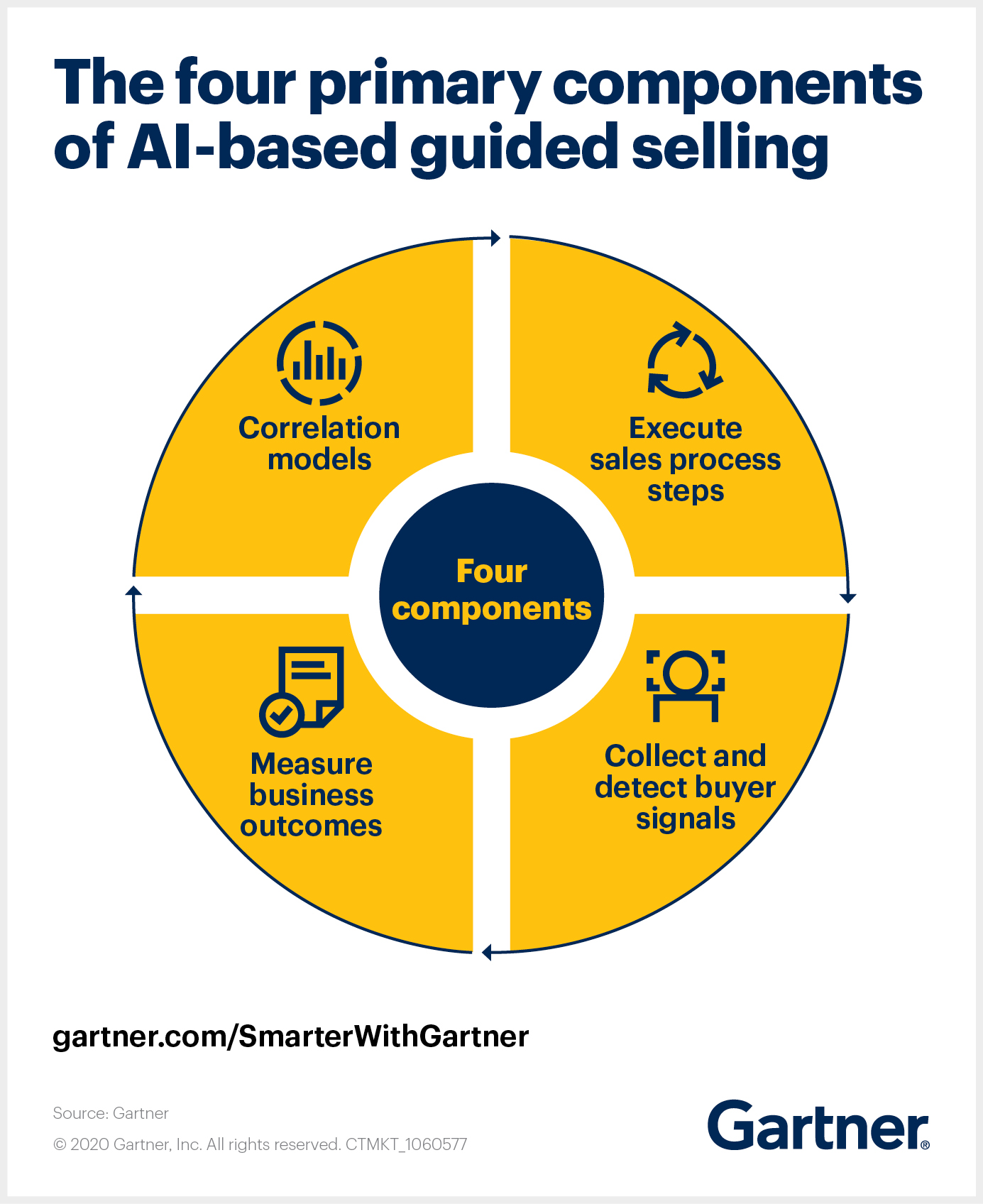The Gartner Future of Sales 2025 report reveals that 60% of B2B sales organizations will transition from experience- and intuition-based selling to data-driven selling by 2025. Why? Because B2B buyers now prefer to engage with suppliers through digital and self-service channels, making multi-experience selling a must-have.
“More interdependence of people, processes and technology will render the traditional sales models less reliable over time”.
To stay relevant and drive revenue in a world where many B2B buyers see little need or desire to engage with a seller at all, sales organizations need to build adaptive systems that incorporate hyper-automation of interactions and transactions between sellers and buyers, digital scalability for sellers, and artificial intelligence (AI).
“The growing interdependence of people, processes and technology will render the traditional sales models less reliable over time — something for which most sales organizations are unprepared,” says Tad Travis, VP Analyst, Gartner. “Embracing this change means sales leaders must adopt the principles of hyper-automation — accept they have to meet customers where they already are and bring B2B digital commerce into the fold.”
Gartner positions hyper-automation as the effective combination of complementary sets of tools that can integrate functional and process silos to automate and augment business processes. For sales leaders, that means automating sales process steps that were previously very analog and moving customer interactions and transactions into the digital channel they prefer, such as digital commerce.
Traditionally, sales organizations treat sales processes, sales applications, sales data and sales analytics as four distinct practices. But technology is rapidly transforming how sales organizations operate. In the next five years, there will be no separation between sales process, applications, data and analytics, as all four will merge into one single concept: AI for sales.
As sales leaders and IT leaders look to enable selling through all channels, they will have to rethink their sales force deployment model and focus investments on virtual selling and digital commerce channels. To do this, sales leaders and IT leaders should consider these three actions.
1. Build an advanced sales technology roadmap
The top priority for sales technology programs should be to build a roadmap that includes advanced approaches such as predictive analytics and guided selling. AI, such as prescriptive next best actions, can tell sellers what to do to close deals and prospects as quickly as possible.
2. Prioritize AI-based guided selling
While developing an advanced sales technology roadmap, sales leaders must prioritize where AI-based guided selling functions would be most relevant by identifying the least efficient parts of the sales value chain. This can include processes that require a lot of human educated guessing, such as what to do next on a complex B2B deal.
3. Invest in technology that attracts new talent and enables virtual selling
Technology not only can optimize processes, it can help sales leaders attract top talent from the Gen Z demographic, who value remote work opportunities and digital collaboration. In addition, investing in technology allows sales organizations to ramp up virtual selling more quickly and improve the buyer experience. This includes arming sellers with high-quality audio and video hardware, and reliable remote meeting platforms that enable sellers to conduct productive customer interactions.
It’s no secret that the COVID-19 pandemic is accelerating this transformation from insight-based selling to data-driven selling. Sales organizations now must accept that buying preferences have permanently changed and, as a result, so too will the sales organization and the role of sellers.























